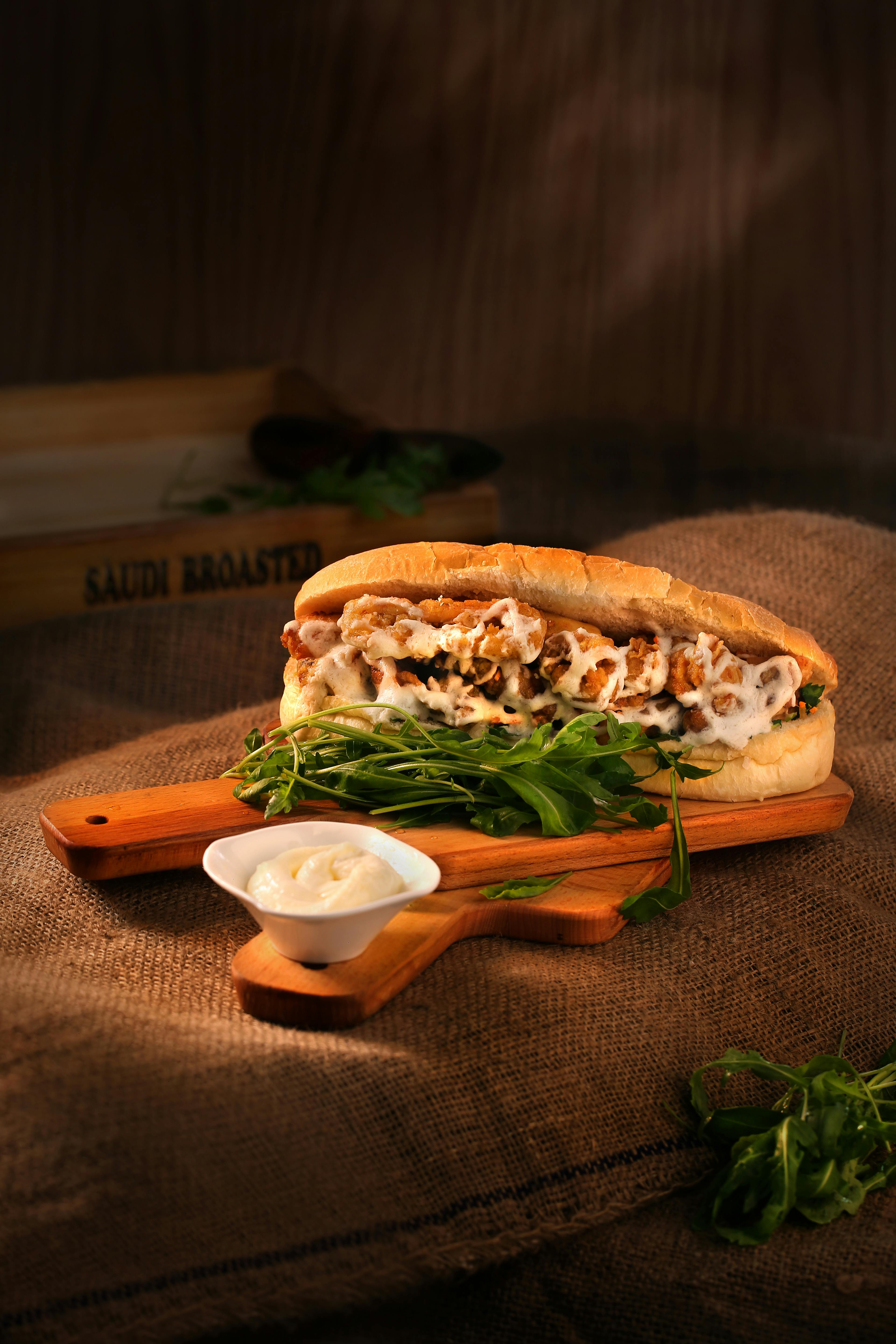Maintaining a healthy lifestyle doesn’t mean sacrificing the pleasure of snack time. With Tastepan’s collection of nutritious and delicious recipes, you can prioritize your well-being without compromising on flavor. The Art of Mindful Snacking: Smart Choices is here to guide you through the world of mindful snacking, providing you with expert advice, dietary tips, and wholesome meal ideas that will nourish your body and satisfy your taste buds. Whether you’re looking for a quick energy boost or a satisfying midday treat, Tastepan has got you covered. Say goodbye to guilt and hello to smart snacking.

Benefits of Mindful Snacking
Improved focus and concentration
When you practice mindful snacking, you allow yourself to truly focus on the food you are eating. This means you are fully present in the moment, savoring each bite and paying attention to the flavors and textures. By doing so, you enhance your ability to concentrate and improve your focus. This is especially beneficial for those who often find themselves feeling distracted or having difficulty staying on task.
Increased satisfaction and enjoyment
Mindful snacking encourages you to enjoy your food to the fullest. By taking the time to appreciate the flavors, aroma, and overall eating experience, you will find that you feel more satisfied and fulfilled after each snack. This can prevent the urge to mindlessly reach for more food or overindulge in unhealthy snacks.
Better portion control
Mindful snacking helps you become more aware of your body’s hunger and fullness cues. By paying attention to these signals and eating mindfully, you are more likely to eat the appropriate amount of food for your needs. This can prevent overeating and contribute to better portion control, which is crucial for maintaining a healthy weight and overall well-being.
Understanding Mindful Snacking
What is mindful snacking?
Mindful snacking is the practice of eating with intention and awareness. It involves being fully present in the moment, without distractions, and paying attention to the sensory experience of eating. Mindful snacking allows you to savor each bite, appreciate the flavors, and listen to your body’s hunger and fullness cues.
How does it differ from mindless snacking?
Mindless snacking, on the other hand, is characterized by eating without paying attention or being present in the moment. It often involves eating while distracted, such as while watching TV or working on the computer. Mindless snacking can lead to overeating, poor food choices, and a lack of satisfaction or enjoyment from the food.
Key principles of mindful snacking
There are a few key principles to keep in mind when it comes to mindful snacking. First and foremost, it involves being fully present and engaged with the food you are eating. This means avoiding distractions and focusing on the sensory experience of eating. Secondly, mindful snacking emphasizes listening to your body’s hunger and fullness cues, eating when you are hungry, and stopping when you are satisfied. Lastly, mindful snacking promotes making smart and nutritious snack choices that nourish your body.

Choosing Nutritious Snacks
Prioritize whole and minimally processed foods
When it comes to mindful snacking, it’s important to choose snacks that are made from whole and minimally processed foods. These snacks are typically more nutritious and contain fewer additives, preservatives, and unhealthy fats. Examples of whole and minimally processed snacks include fresh fruits, vegetables, nuts, seeds, and homemade granola bars.
Opt for snacks with a balance of macronutrients
To ensure that your snacks are satisfying, it’s important to opt for options that provide a balance of macronutrients. This means incorporating a combination of protein, carbohydrates, and healthy fats in your snacks. For example, pairing Greek yogurt with fresh berries or enjoying whole grain crackers with hummus can provide a well-rounded and nutritious snack.
Read labels and avoid hidden sugars and unhealthy fats
When choosing packaged snacks, it’s crucial to read the labels and be aware of the ingredients. Avoid snacks that are high in added sugars, unhealthy fats, and artificial additives. Look for snacks that have simple and recognizable ingredients, and opt for options that are lower in sodium and saturated fat.
Smart Snack Ideas
Fresh fruits and vegetables
Fresh fruits and vegetables make excellent choices for mindful snacking. They are packed with vitamins, minerals, and fiber, and provide a satisfying crunch and natural sweetness. Some great options include sliced apples with almond butter, carrot sticks with hummus, or a bowl of mixed berries.
Nuts and seeds
Nuts and seeds are nutrient-dense and provide a good source of healthy fats, protein, and fiber. They are portable, convenient, and can help keep you feeling satisfied between meals. Choose options like almonds, walnuts, pumpkin seeds, or chia seeds, and enjoy them on their own or mixed with dried fruits for a delicious trail mix.
Greek yogurt and cottage cheese
Greek yogurt and cottage cheese are rich in protein and calcium, making them ideal choices for a satisfying and nutritious snack. Enjoy them on their own, or mix in some fresh fruits, nuts, or seeds for added flavor and texture.
Whole grain crackers with hummus
Whole grain crackers are a great alternative to refined grains, as they provide more fiber and nutrients. Pair them with a flavorful hummus for a satisfying and delicious snack. Look for crackers that are made from whole grains, such as brown rice or whole wheat, and choose a hummus that is low in added oils and preservatives.
Homemade granola bars
Making your own granola bars allows you to control the ingredients and ensure that they are free from added sugars and unhealthy fats. Combine oats, nuts, seeds, and dried fruits together with a natural sweetener like honey or maple syrup, and bake them into delicious and nutritious bars. These bars can be enjoyed as a quick and convenient snack on the go.

Mindful Snacking on the Go
Preparation and planning
When it comes to mindful snacking on the go, preparation and planning are key. Take some time to plan your snacks ahead of time and pack them in portable containers or bags. This way, you can easily grab them when you are on the go and avoid making unhealthy choices out of convenience.
Portable and convenient snack options
There are plenty of portable and convenient snack options that you can take with you when you are on the go. Some examples include pre-cut fruits and vegetables, individual packs of nuts or seeds, single-serving Greek yogurt cups, and homemade trail mix. These snacks are easy to pack, require no refrigeration, and can be enjoyed anywhere.
Healthy choices at convenience stores and airports
Even when you find yourself at convenience stores or airports, there are still healthy snack options available. Look for options like fresh fruit cups, pre-packaged vegetable sticks with hummus, mixed nuts and seeds, or yogurt parfaits. You can also opt for a salad or a sandwich with whole grain bread if those options are available.
Mindful Snacking for Weight Management
Listen to your hunger and fullness cues
Mindful snacking can be a helpful tool for weight management when you pay attention to your body’s hunger and fullness cues. Before reaching for a snack, ask yourself if you are truly hungry or if you are eating out of boredom or stress. Eat slowly and mindfully, focusing on the flavors and textures, and stop eating when you are satisfied, rather than overly full.
Avoid emotional eating triggers
Emotional eating can lead to excessive snacking and weight gain. To avoid emotional eating triggers, find alternative ways to cope with your emotions, such as practicing deep breathing, going for a walk, or engaging in a hobby. If you find yourself reaching for food out of emotional reasons, take a moment to pause and assess your feelings before deciding to snack.
Practice portion control
Portion control is essential for weight management, and mindful snacking can help you achieve this. Instead of mindlessly eating straight from the bag or container, portion out your snacks into a small bowl or plate. This helps you visualize how much you are eating and prevents you from eating more than you actually need.
Mindful Snacking for Stress Relief
Choose snacks that are rich in antioxidants
When you are feeling stressed, it’s important to choose snacks that can help support your body’s stress response. Snacks that are rich in antioxidants, such as berries, dark chocolate, or green tea, can help reduce oxidative stress and inflammation in the body. These snacks can provide a calming effect and contribute to overall stress relief.
Include mood-boosting foods
Certain foods can have a positive impact on your mood and enhance feelings of well-being. Snacks that contain omega-3 fatty acids, such as walnuts or chia seeds, can help reduce symptoms of depression and anxiety. Additionally, foods rich in tryptophan, like Greek yogurt or cottage cheese, can promote the production of serotonin, a neurotransmitter that helps regulate mood.
Avoid using food as a primary coping mechanism
While snacks can provide temporary comfort, it’s important to avoid using food as your primary coping mechanism for stress. Instead, try incorporating other stress-relief techniques into your routine, such as exercise, meditation, or spending time with loved ones. By diversifying your coping strategies, you can cultivate a healthier relationship with food and better manage stress.
Mindful Snacking as a Part of a Balanced Diet
Incorporating snacks as part of meal planning
Incorporating snacks into your meal planning can help ensure that you have nourishing options available throughout the day. When planning your meals, think about incorporating a mid-morning and mid-afternoon snack to keep you energized and satisfied between meals. This can help prevent excessive hunger and reduce the likelihood of making unhealthy food choices.
Balancing snack choices with main meals
When choosing snacks, it’s important to consider how they fit into your overall diet and main meals. Ensure that your snacks provide a balance of nutrients and contribute to your daily calorie and macronutrient needs. For example, if you have a light dinner planned, you may opt for a more substantial snack in the afternoon to help maintain satiety until your next meal.
Emphasizing variety and diversity in snacking
To ensure that you are receiving a wide range of nutrients, it’s important to emphasize variety and diversity in your snacking. Try to incorporate snacks from different food groups, such as fruits, vegetables, protein sources, and whole grains. This not only provides a more enjoyable snacking experience but also ensures that you are getting a balanced intake of nutrients.
Creating a Mindful Snacking Routine
Set regular snack times
Setting regular snack times can help establish a routine and prevent mindless snacking throughout the day. Aim to have a snack mid-morning and mid-afternoon, and try to stick to these times as closely as possible. By having a set schedule for snacking, you can better prepare and plan for nutritious options.
Create a calm and distraction-free snacking environment
Creating a calm and distraction-free environment while snacking can enhance the mindful eating experience. Find a quiet space where you can focus solely on your snack, away from screens or other distractions. This allows you to fully engage your senses and enjoy the flavors, textures, and smells of your snack.
Engage your senses while enjoying snacks
Engaging your senses while enjoying snacks is an important aspect of mindful snacking. Take the time to appreciate the colors, shapes, and textures of your snacks. Savor each bite, paying attention to the flavors and how they change as you chew. Notice the smells and sounds associated with your snack. By fully engaging your senses, you enhance the overall eating experience.
Conclusion
Mindful snacking promotes a healthier relationship with food
By practicing mindful snacking, you cultivate a healthier relationship with food. You become more aware of what you are eating and why, and you savor and enjoy each bite. This can lead to improved food choices, better portion control, and a greater sense of satisfaction and fulfillment from your snacks.
Making smart snack choices supports overall well-being
Choosing nutritious and balanced snacks is not only beneficial for your physical health but also for your overall well-being. Snacks that provide a good balance of macronutrients and are made from whole and minimally processed foods help fuel your body and provide essential nutrients. These smart snack choices can contribute to increased energy levels, improved mood, and better overall health.
Enjoying snacks mindfully enhances the dining experience
Mindful snacking allows you to fully appreciate and enjoy the dining experience. By being fully present and engaged with your snacks, you enhance the sensory experience and derive greater satisfaction from your food. Mindful snacking can turn a simple snack into a moment of relaxation and pleasure, allowing you to truly nourish both your body and mind. So, take the time to choose nutritious snacks, savor each bite, and enjoy the benefits of mindful snacking in your daily life.

